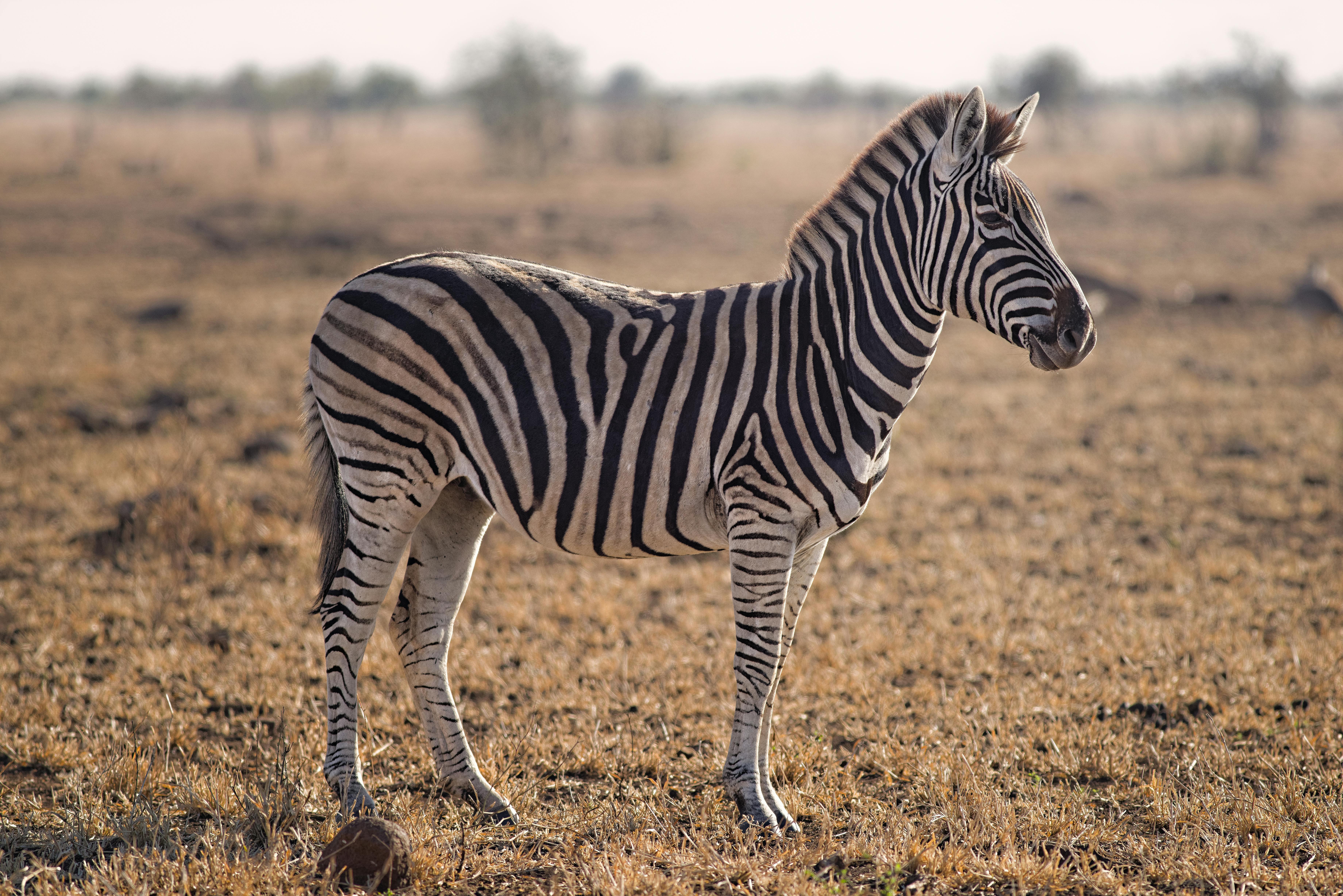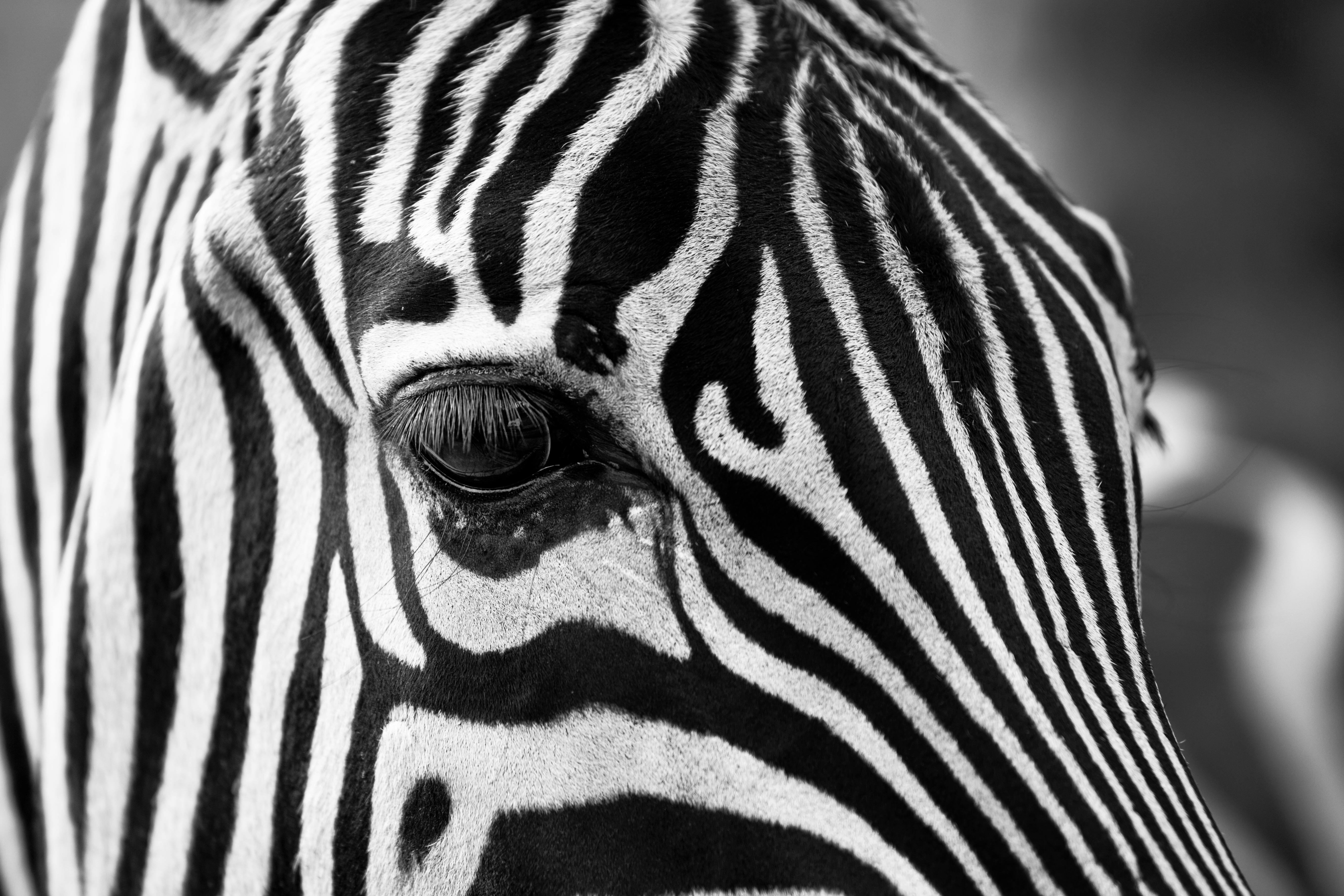The zebra is a beautiful and unique animal that can be found on the African plains. It is a member of the horse family, but has distinctive black and white stripes that make it stand out from other animals in its family. Its stripes are thought to provide camouflage against predators, as well as helping to regulate its body temperature. Zebras are very social animals and live in herds, where they look after each other’s young. They are also very fast runners, allowing them to escape from predators.A Zebra is a medium-sized mammal that is part of the Equidae family. Zebras are most recognizable by their black and white stripes, which are unique to each individual. They are native to Africa and can be found in grasslands, savannas, woodlands, and mountain regions. Zebras typically graze on grasses and other vegetation.
Contents
Physical Characteristics
Zebra is a species of equine which is native to parts of Africa and is known for its distinctive black and white stripes. It has a stocky body with a bristly mane, long ears, and a long tail. Its coat consists of short, stiff black and white hairs and their legs have vertical stripes that go all the way up to their hooves. Zebras have good eyesight, which helps them to avoid predators in the wild. They also have an excellent sense of smell.
Diet
Zebras are herbivores and they mainly feed on grasses and other plant matter such as shrubs, leaves, buds and twigs. They can also feed on fruit, bark and roots in times when grasses are scarce. Zebras often form herds to graze together on different types of vegetation. They can travel great distances in search of food and water sources.
Behaviour
Zebras are usually very social animals and live in groups called harems or herds which can range from small groups to large herds containing hundreds of animals. The dominant male zebra will lead the herd while the females look after their young ones called foals. Zebras communicate with each other through vocalizations such as snorts or grunts as well as by touching each other with their muzzles or necks while grooming one another. Zebras also use their stripes to confuse predators in the wild by creating an optical illusion that makes it difficult for them to pick out individuals within the herd.
Reproduction
The mating season for zebras usually takes place during the rainy season when food is abundant. The female zebra will give birth to one foal after a gestation period of 12 months, however twins are rare occurrences. Foals are able to stand within minutes after birth and they begin grazing within a few days after birth under the protection of their mothers or other female members of the herd. Young zebras reach sexual maturity between 2-3 years old but may not be allowed to mate until they have established themselves within the herd hierarchy by proving themselves through strength and agility challenges against other males in the herd
Types of Zebras
Zebras are some of the most iconic animals in the world, with their distinctive black and white stripes. There are three species of zebra found in Africa, each with its own unique characteristics. The most common species is the Plains Zebra, also known as the Burchell’s Zebra. This species is widely distributed throughout much of southern and eastern Africa. Plains Zebras live in large herds and feed on a variety of grasses and shrubs. They have broad stripes on their body and legs, which help them blend into their environment and protect them from predators.
The second species is the Grevy’s Zebra, which is found in northern Kenya and Ethiopia. This species has narrower stripes than Plains Zebras, as well as a white belly. Grevy’s Zebras are also larger than Plains Zebras, reaching up to 11 feet long and weighing up to 1,500 pounds! They live in smaller herds than Plains Zebras and feed on different types of grasses than them as well.
The third species is the Mountain Zebra, which can be found in Namibia and South Africa. Unlike other zebras, Mountain Zebras have a distinctive brownish-gray coat with white stripes on their hindquarters. They also have distinctive white stripes on their front legs that help them blend into rocky terrain where they live. Mountain Zebras are also smaller than other zebras, reaching only up to 8 feet long and weighing up to 800 pounds!
All three species of zebra have unique characteristics that make them special in their own way. Whether it’s their unique stripes or size differences, these animals are truly fascinating creatures that can be found across much of Africa!
Diet of Zebras
Zebras are herbivorous animals, meaning they primarily feed on plants. They mostly feed on grasses, although they may occasionally eat shrubs and other foliage. They also consume herbs, roots, twigs, bark, and leaves. They also eat some fruits, such as the wild watermelon or the marula fruit. Zebras feed in the mornings and late afternoons when temperatures are cooler.
The diet of a zebra depends on its habitat. In the savanna grasslands of Africa, zebras have access to plenty of grasses to graze upon. In more arid habitats, zebras may need to supplement their diets by consuming shrubs and other foliage. Zebras can also eat prickly plants that many other animals cannot because of their tough skin and long tongues.
Zebras can go for long periods without water since they get most of their hydration from the plants they consume. In times of drought or extreme temperatures, zebras may need to supplement their diets with minerals from salt licks or access to sources of water such as rivers or lakes.
In addition to grazing on grasses and other plants, zebras may also eat insects such as ants and termites for additional nutrition. This helps them get protein and other nutrients not found in vegetation alone.
Overall, the diet of a zebra consists primarily of grasses supplemented with leaves, twigs, bark, herbs, fruits and some insects in times of need or drought conditions.
Distribution and Habitat of Zebras
Zebras are found in the savannas, grasslands, and sparse woodlands of East Africa, Central and Southern Africa. In some areas, zebras can be seen living in mountains up to 16,400 feet. They prefer areas with plenty of vegetation for grazing on grasses, herbs, shrubs, and browse. During the dry season, zebras will travel to different locations in search of food and water. Some zebra species are migratory, travelling hundreds of miles in search of food during certain times of the year.
Zebras live in small family groups called harems that usually consist of one stallion, four to five mares, and their foals. The stallion is responsible for protecting the harem from predators such as lions or hyenas. Zebras also gather together in larger herds that often include other species such as gazelles or antelopes. The number of animals in a herd can range from a few dozen to several hundred.
Overall, zebras inhabit a wide range of habitats across Africa and have adapted well to various environments. They have developed strong social bonds that help them survive on the savanna plains among many predators.

Behaviour of Zebras
Zebra behaviour is highly affected by their environment. In the wild, zebras tend to form large herds and travel together in search of food and water. This is known as a “safety in numbers” strategy, where the risk of predation to individual animals is reduced. Zebras are also very social animals and will spend time grooming each other and playing. In addition, zebras are very territorial and will defend their territory from other animals such as lions or hyenas. They will also make loud calls to alert others in the herd of potential danger.
Zebras also use various body language signals to communicate with each other. For example, when two zebras meet they will often lock eyes and move their heads up and down in a “zebra nod” which shows agreement or understanding between them. They may also stamp their hooves on the ground or snort loudly at each other to show aggression or warning.
Zebras can also be quite protective of their young and will not hesitate to fight off predators if necessary. However, if they feel that the threat is too great they may attempt to flee the area while leaving behind some of the weaker members of their herd in order to ensure that the majority survive.
Reproduction of Zebras
Zebras reproduce sexually, and are polygynous, meaning a male zebra will mate with multiple females. The gestation period is approximately 12 months, and the foal will stay with its mother for up to two years before becoming independent. During this time, the foal will learn important behaviors such as grazing, fighting and survival skills from its mother. Breeding usually occurs during the wet season when food is plentiful and water is abundant.
Lifespan of Zebras
The lifespan of a zebra in the wild is approximately 25 years, although it can live up to 40 years in captivity. In the wild, zebras face predation from numerous predators such as lions, hyenas and cheetahs. As well as predation, zebras must also battle dehydration and starvation due to drought or lack of food sources. All these factors can reduce their lifespan significantly.
Common Predators of Zebras
Zebras are vulnerable to a variety of predators, including lions, hyenas, jackals, cheetahs, and wild dogs. Lions are the most dangerous predator for zebras, with large prides that can take down even adult zebras with relative ease. Hyenas are also a major threat to zebras, as they often hunt in packs and can overpower small groups of young or sickly animals. Jackals often prey on baby or juvenile zebras that have been separated from their herd. Cheetahs will sometimes target adult zebras if they are alone or injured. Wild dogs pose the least risk to adult zebras but can be a major threat to young animals if they become separated from their herd.
In order to defend themselves against these predators, zebras rely on their keen eyesight and hearing as well as the protection of their herd. Zebras typically travel in herds which can range from a few individuals up to hundreds of animals. The sheer numbers of the herd make it difficult for predators to single out an individual zebra and make it easier for them to detect danger from afar. Zebras also have strong kicking abilities that can be used to ward off potential threats from predators.

Conclusion
Zebra animals are one of the most interesting and unique mammals in the world. With their distinct black and white stripes, they are easily recognizable and can be found in Africa and parts of Asia. Zebras have a wide range of habitats, from grasslands to woodlands. They also have an extraordinary sense of smell and hearing that helps them to detect predators and other threats. Zebras are also highly social animals, living in large herds for protection and companionship.
In conclusion, zebras are fascinating creatures that bring diversity to the animal kingdom with their unique black and white striped coats. They inhabit a wide range of habitats, have an impressive sense of smell and hearing, and live in large herds to provide both protection and companionship. This makes them truly remarkable animals worthy of admiration.

0 Comments